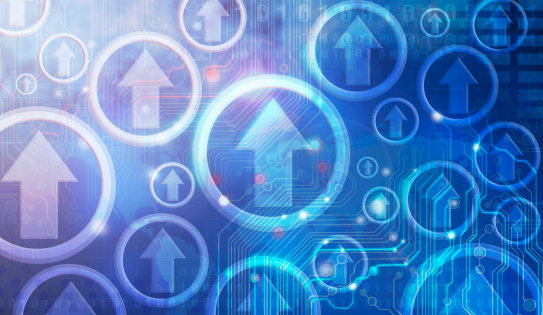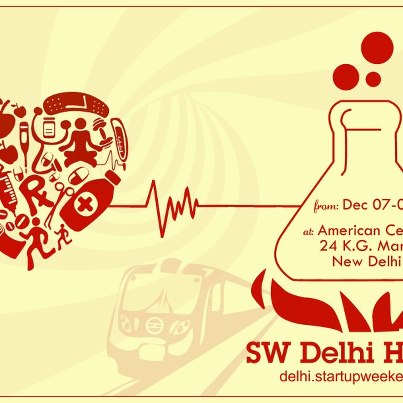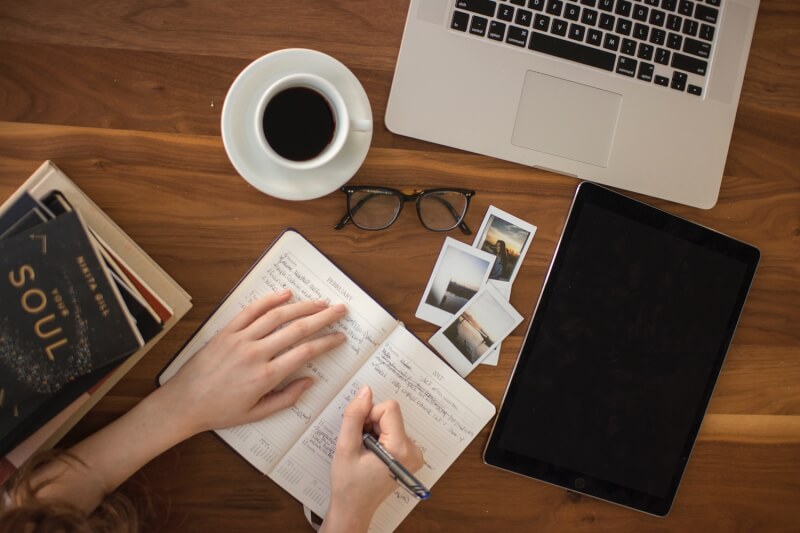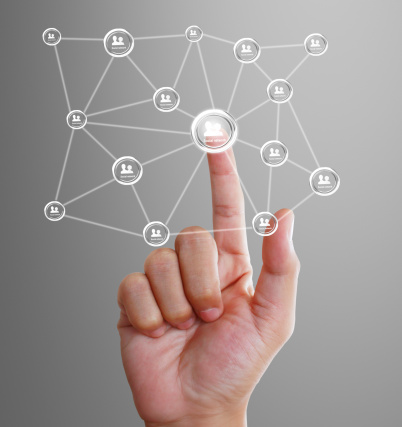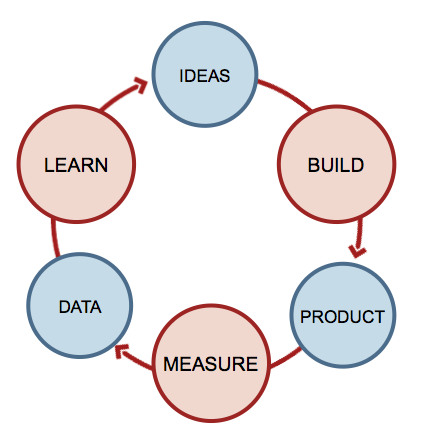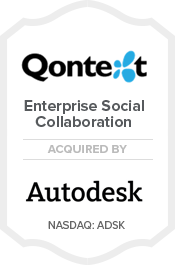- Patience: You should have a lot of patience. Developers will take their own sweet time in building the application and marketing it. Many times, you will want to get in and help them develop. But that is not scalable. Though it will take time, it is better for them to figure out the solutions on their own as in the long run that will mean lesser support.
- Documentation: This is the most important part. You wont believe the amount of support calls that are reduced by having some decent documentation. Unfortunately, this is one area where we still have to improve and thats why we still get support calls.
- Logging: Your platform should explain what is happening behind the scenes to the developer through logs. It will help them in debugging the issue themselves before they reach out to support.
- API: Think through what and how you want to expose your API. Because, once you open it to the public and they start using it, it will be really hard to take back and you will end up supporting multiple versions.
- Evangelize: You should have a team of evangelists who should go to events, do live coding, help hacking communities etc to drive adoption. This is the hardest part, convincing developers to invest their time in learning your platform. It is much harder in India as the hacker community is in a nascent stage(though growing very very well).
- Star products: Every platform should have some star performers. They are the ones which will help in people believing in your product. Identify your star products and put all your efforts in making sure they succeed.
- Mashups and Blog: Build mashups on your platform yourself to showcase the capabilities. You know your platform best, so you will have to build very innovative and fun apps. After building mashups, blog about them and spread the word. Again, in India, its hard to build mashups with content from an Indian context. Till last year, we did not have a lot of APIs for Indian content. But now a lot of companies like Zomato have started opening up APIs and phone mashups can easily be built.
- Support: This will make or break your platform. Developers have very little patience. If they send a mail to support, they better get a response within 5-10 minutes. Otherwise, they will end up Googling for another platform which will solve their platform. Luckily, so far at least we have been able to keep our developers happy with our support. Support does not just mean technical support. Many times we have actually had to mentor a lot of startups building on our platform. You should be willing to listen to their problems and suggest advice if you have any.
- Developer events: You should conduct developer events and hackathons so that the new developers get to know about your platform. Unfortunately, being bootstrapped, we have not yet had funds to do this 🙂
- Sponsor events: In addition to conducting events, another way of getting mindshare of developers is to sponsor events. We are continuous sponsors of Startup Weekend events in India and have also sponsored hackathons in colleges like BITS where students have built very innovative applications.
Start the revolution in Healthcare at StartupWeekend, New Delhi
Until the dawn of this decade not many people would have thought of transforming the way dismal healthcare system works in India let alone doing it over the course of 2 days but this is about to change as the Startup Weekend comes to Delhi on 7 Dec with a sole focus of encouraging entrepreneurs who are passionate about revolutionizing the healthcare system in India. The event will provide an excellent platform where business people, doctors, designers and awesome developers can come together and take first steps towards developing the next big thing in healthcare!
The agenda for the weekend is jam packed with keynote addresses from eminent speakers, exciting pitch sessions, intensive coaching from renowned mentors and enjoyable networking sessions. The event will be attended by leaders from health and start-up fraternity including Chavvi Gupta (Co-founder YoPharma), Subinder Khurana (Mentor, NASSCOM Emerge Forum), Paul Singh (Partner, 500 Startups), Maniraj Singh Juneja (Co-founder of MadeInHealth), Zachary Jones (CEO of Portea Medical) and Maninder Singh Grewal (MD at Religare Technologies).
Here’s an idea of what Start-up Weekend Delhi Health is going to look like from 7th December to 9th December 2012 at the American Center on KG Marg. All attendees will have an opportunity to pitch at least one idea in 60 seconds.
Please make your arrangements to be at the venue late into the night on Friday and Saturday. If you need a couch to crash on, start talking to other participants when you get to the venue. We will provide dinner on Friday evening, Breakfast/Lunch/Dinner on Saturday and Breakfast/Lunch/Snacks on Sunday.
Whether entrepreneurs found companies, find a cofounder, meet someone new, or learn a skill far outside their usual 9-to-5, everyone is guaranteed to leave the event better prepared to navigate the chaotic but fun world of start-ups. If you want to put yourself in the shoes of an entrepreneur, register now for the best weekend of your life!
Post Contributed by Abhimanyu Godara
10 reasons why I spend a lot of time in the product ecosystem
As product entrepreneurs, every hour of our time is important. We run businesses that can succeed or fail depending on our choices. One of those choices is the time we spend on the eco-system. Yet I have chosen to spend a lot of time on the ecosystem. Here is why.
1) Learn from mistakes and successes: How much ever you say that you are doing something unique, you will be surprised to see that there is someone else doing something similar. They have made mistakes and they have had successes. Learning not to do their mistakes and learning to emulate their success is vital for your success. Learn every day.
2) Networking is exponential: At first glance networking seems one to one. But if you are genuine, you would be surprised to find that networking can be exponential. Talk to someone, that person talks about you to someone else and soon its viral in a social sort of way. You never know how the stone that goes out comes back positively.
3) Sharpen your knife for free: Get that UI feedback, or sharpen that go to market strategy. What you thought was the best based on your own thinking may turn out to be second best before you got that good opinion.
4) Proactive helping gives joy: I find joy in sharing something to someone, which would save that person from huge mistakes or a lot of effort. Along the way if someone helps me back the same way, I will be happy, but not expect it.
5) Winning awards is much more than being egoistical: Your customers are looking for third party endorsements from reputed organizations. They may not ask you, but seeing one on your site gives them comfort. Win some for you and your company
6) Collaborate to win the market: Many of us attack the same market. How often do you get an inquiry that you cannot use. Share it with someone who need it. You will get one back some day. If we organize ourselves well we can even create a market.
7) Big brother isn’t so difficult with an ecosystem: Learn how to deal with the government. Taxes, banking, laws and much more can be handled much more easily by working with others in similar situations. It is not just learning how to handle a situation, but also acting jointly for getting something done.
8) Mentor or be mentored: You will be surprised at the number of senior people willing to spend their time with you without expecting anything back. Years of experience, yet ready to help you with your problem. Remember to give back why you are ready to mentor too.
9) Get Funded, find a partner, or even find a solution: The ecosystem is a magnet for all kinds of people – investors, solution partners, suppliers and everything in between. Mingle around, be open and gain from it.
10) Make friends along the way: The moment someone realizes that you are helping not for monetary gain, but because you just want to help, you make a friend. Business acquaintances are aplenty, but a friend is rare. I’d love to nurture them.
I’ve met many people who have inspired me along the way. Surprisingly most of the people who inspired me are not ones who speak from podiums, but people who open their hearts out with their passion. Cheers to the software product ecosystem – whatever shape or form it is!!
Guest Post Contributed by George Vettath, Kallos Solutions. Image Courtesy – NPC, Zinnov, Martecker
Be a part of the journey to Product Nirvana!
There has been a huge upstart in the number of product companies in India in the last 12 months. 700% is the estimate according to Zinnov Consulting. Most of them, as one keynote speaker at the recently held NASSCOM Product Conclave 2012 said ominously or more from experience being in the Silicon Valley, “will fail”. Why startups fail can be due to any number of reasons but the chances of succeeding is unarguably high if employees get product management right! So, what is Product Management? It is the art and science of creating the right product for the right user at the right time and in the process create a successful business! It is the functional domain which asks the questions what products do we build, who is it for, why do they need it, will they buy if we build it and how will the product work?
India Product Management Association (IPMA)
All this in a few hours with networking over lunch on Saturday December 8, at Microsoft office on Lavelle Road, Bangalore. The highlight of the event is the keynote by Ram Narayanan, a product management veteran on “Building customer centric product strategy”, a craft, very few get it right! The event also features Mukund Mohan, Pallav Nadhani, Pinkesh Shah, Saran Chatterjee, Sanjay Jain, Sarit Arora, Dhimant Parekh etc on panels.
IPMA has chapters in Bangalore, Pune and one more coming up in New Delhi soon. Visit http://indiapma.org for details or better yet register for this annual event before the limited seating runs out: http://indiapmaannualevent2012.doattend.com/
The event is sponsored by Confianzys and Tally Solutions and hosted by Microsoft.
Passion, Conviction and Approach to entrepreneurship
Many People keep wondering about the kid who rarely talks at home and not good to get grades in school but went on to become an amazing start-up genius.
Celebrated Lawyer of his time Moti lal Nehru was neither happy with the grades his son got in graduation in England nor with his career as Lawyer. But Jawahar Lal went on to become one of the most celebrated politicians of Independent India.
So, life is not about having a packaged education and career but entrepreneurship which is more about living one’s passion and conviction in life. Passion is the fuel that drives the creation of dreams and conviction is needed to realize those dreams.
This inborn commitment gets you out of bed every day. The aim should excite you to the core and channeling of passion becomes key to success.
Sometimes the idea may give the nay-sayer dizzying nausea due to its grandness and chances of failure.
Successful entrepreneurs know that failure is part of the journey, and that without failure, there is no success. Only in dictionary “success” comes before “failure” not in real life.
Passion without conviction may make a young entrepreneur shooting star in the harsh realities of the world. Conviction streamlines your passion into a steady flow. After all, most people have innovative ideas at some point in their lives.
It is conviction that determines what you do with your ideas.
Do you let it die? Or do you go for it?
Let`s face it: Those who have achieved extreme success had some extra mettle and more importantly commitment to their goal.
It takes strong will power for never want to quit and believing in something that defines you. It is this conviction that takes you to a state of euphoria in which give you confidence to think that you can tackle get to the unachievable which others.
Gandhi successfully took to the fasting for ‘self-penance’ to use his moral force against violence which became surmountable in certain periods before and after independence.
So believe in yourself and at the end of the day, everyone who told you no will deserves some credit for making you more committed towards the coveted goal of your life.
If you are able to relate with this, congratulations!
You`re ready to be an entrepreneur. Your quiver is ready with the right arrows – set of virtues, to yield big things in life. You were born to make a difference. Get on with your idea if you believe you have something special. Challenge the paradigms that bind you, and go change the world.
Contributed by Ajay Data, Data Infosys
Day 2 of NPC: Attempting to Steer in the Right Direction
As NASSCOM Product Conclave 2012 drew to a close, Sharad Sharma reiterated that product technology will eliminate poverty in India. The social consciousness and import of this statement, usually reemphasized as electoral slogans of gharibi hatao by politicians, points to envisioning a future in which the role of product technology encompasses not only growth of global companies, impacting the world (changing the world!), in India but also its increasingly central role in the nation’s development. M. Rangasami is the visible face of NPC, curating sessions with childlike enthusiasm. He wants to pay back his home country, from which he grew up for the first 20 years of life, something substantial and impactful. And he sees product technology as one means, as it is likely to explode in the coming years. The Valley has about 30% plus of Indian cofounders in startups and innumerable successful product executives and entrepreneurs. If they are inspired by MR to pay back to the nation, imagine its impact. In a way, NASSCOM Product Conclave brings some of them into the sessions to inspire the product entrepreneurs in India.
India—what is happening really?
As predictions are glorious of the future, what is happening on ground in India? What prompts envisioning a game-changing future for product tech? Maybe success of companies like InMobi. Naveen Tiwari, InMobi founder, was generous with his time to explain how InMobi succeeded and was seen in the hallways talking to people wanting to strike a conversation. In the breakfast session, he explained the InMobi way of global growth and scale. InMobi did not go after developed markets like US and Europe to start with. They identified huge white spaces in markets like Southeast Asia and Africa where customer needs were identified by online sales first. Then one of the founders would typically fly to that country to understand the market. This is not an easy task and over time, InMobi would hire a local person to run its operations. And thinking big and not content with growth, the InMobi team constantly brainstorms on how to usher in say 10x growth. Any big achievement starts with thinking big and following it up with risky initiatives. And you should stay undaunted by failure and missteps. There was a mention by Niel Patel, founder of QuickSprouts in his keynote in the evening, that product ventures don’t succeed at first iteration. They turn successful at third iteration. And product ventures cannot hit scale on a template model like services. In addressing the press, to showcase apps that promise to be game changers, Sharad Sharma said, “TCS showed the way and everyone followed it [in services]. But in products, it cannot be done.” Each story is different and each endeavour unique. Naveen Tiwari and InMobi can inspire product entrepreneurs to think of huge possibilities if one goes cracking. And identifying the sweet spot to achieve that takes multiple iterations. Deep Nishar, the star product manager at LinkedIn, earlier in the keynote, pointed out that no first iteration was successful. For example, PayPal started initially to enable payments on handheld devices and then changed to Internet payments. YouTube started as a video dating site and became a social video site later. Some have vanished on the way too, due to various reasons.
Where is the market?
Market evolution and customer adoption are crucial to succeeding in a product venture. Deep Kalra’s story is well known. When Internet was still in nascent stages, he started a web-based travel site. Sensing that opportunity exists outside India, he first served NRIs travelling to India. It took close to five years to find that customers will go to Internet to book tickets in India. Effectively, MakeMyTrip took off in India only in 2005. Indian product technology skill sets are not in question. But is the market ready for your offering? That is another question to keep in mind. Apps are exploding. Child prodigies are pouncing on to that space. But where will apps lead India into? Will it stay a diverse apps market with thousands of apps or will something like a global rage app (say Angry Birds) come out of India?
The kind of pertinent questions that are asked at this stage is how to move to the next stage. A vast number of sessions addressed challenging questions such as pitching right to the investor, a novel reverse pitch for investors to find suitable entrepreneurs, how to take mobile apps global, hiring the sales people, and metrics-driven marketing. When the question to Deep Nishar was put forth on what to focus upon to build a business in products, he pointed out to disruptions in enterprise software and building over it. His take was that enterprise products could be tested in India and taken to the rest of the world. The sense one could get out of these types of propositions and expert speak is that the market is in a flux. Enormous product tech activity is happening. But for some products, the market has to mature (adopting Indian products in enterprise) or be created for others (for example, SMBs). Deep Nishar pointed out the new smart phone like iPhone and Galaxy as not overnight innovations. A combination of earlier developments only results in a new innovation. Palm top, touch screen, iPod all combine in a new visual and spatial thinking to result in an iPhone. Can you think of a combination of such innovations to create something new and create a new market for those products?
Building products for India or the world?
A common prescription of experts like Amar Goel and Deep Nishar is that you stay close to the customer for whom you are developing the product. There is another school that thinks customer care shouldn’t be needed as the product should be simple and self-explanatory for users anywhere in the world. Deep Nishar laid seven components of a product to create a product bliss. Simplicity is one overarching principle. He opines that too many choices would make the product unattractive. Focus on select features and build on them. He showcased several LinkedIn features to validate his statement. For example, when LinkedIn was on mobile, the team did not adapt Web into mobile. They sought to understand what LinkedIn would look like on a mobile and created a new look. And sensing that customers log on to mobile devices such as iPad and smart phones early in the morning or late at night, news was added to mobile LinkedIn. Moreover, a feature shows the day’s appointments too.
Given that there is a possibility of Cloud to build a product and sell it all over the world, what kind of products could be developed without needing customer in proximity is an innovation that could be thought of. And most Indian product companies now have a global market. But scale is the question.
More questions than answers
By showcasing successes outside India and bringing in product developers like Tarkan Maner of Dell Wyse who has sold his company to Dell for a billion dollars, there is an endeavour to instil right thinking and point to pertinent directions. And by engaging several people in the ecosystem to understand their experiences of what worked and what hasn’t provides a clarity picture for the product entrepreneurs. At this moment, though, there seems to be more questions asked than answers given. The important need of the moment is asking the right questions. So it is the hope that answers will evolve and such answers would lead to a product tech revolution, as in MR’s prediction, or it would even answer India’s societal concerns of eliminating poverty, in Sharad Sharma’s extrapolation.
Both predictions are not imaginary but understood from the success of products and its greatest impact in the United States. The wealth that Bill Gates created is being channelled into health care concerns of the world and when iPhone 5 was released, there was a report that its sales across the world would contribute a significant percent to US GDP. Such developments set the context for India to take the cue and look ahead.
Contributed Venkatesh Krishnamoorthy, Product Tech Ecosystem Enthusiast
First Day of NPC 2012 a Roller Coaster between Hope and Reality
A broad sweep of the first day of the NASSCOM Product Conclave gives rise to emotions of a day that rose in energy, stayed sober at the reality picture,
and then gave a reason for cheer as the day drew to a close.
On the shore of Big Blue ocean breakfast session opened up the world of possibilities for Indian product technology. IBM-mers Peter Coldicott (Chief Product Architect), Robert High (IBM Fellow in IBM Watson), and Daniel Yellin (Enterprise Mobility Chief Engineer) perhaps gave a thunderous opening. What products can do and how it can envelope the whole world in its embrace was shown by these three IBMmers. While Robert High showed his project of deciphering human language to understand behaviour to solve people’s problems, using huge chunks of articles data to arrive at solutions for health problems using NLM and cognitive science techniques, Peter Coldicott took “Smart” control of the cities, traffic, commerce, and manufacturing to usher in a Smarter Planet. These two endeavours redefine the role of technology in solving the outstanding problems of humanity and governments. For example, Smarter Traffic will help you negotiate the city traffic by understanding how traffic is regulated and data on what’s real on the road. Daniel Yellin’s mobility solutions through apps would reconfigure enterprise functioning. While IBM is engaged with the whole planet (as it seems to be), Indian product entrepreneurs are just sensing the opportunity on the horizon.
Sharad Sharma’s passionate opening in calling product entrepreneurs transformers of the society gave a sense of purpose beyond the lure of money that gets one to business. His even bolder prediction of product software eliminating poverty gave rise to cheer. “The product entrepreneurs will rule” proposition put product technology on a pedestal. NASSCOM President Som Mittal’s emphasis on the enabling role of NASSCOM by its various initiatives such as it entering into an MOU with SIDBI for risk capital funding of SMEs promised hope. M. Rangsami’s Westward view (or call it Silicon Valley view) of Indian product landscape becoming affordable for millions gave it a mainstream leaning, given that still product entrepreneurship languishes for lack of attention save a few niche communities and select media coverage.
This glorified image was enhanced by Naveen Tiwari’s three mantras of building a billion dollar company. InMobi’s commanding success ranking next only to Google in mobile advertising is a reason for celebration of Indian product entrepreneurship. His trillion ads making $2 billion business impact was transporting us to a dizzy world of big numbers. And the global reach of InMobi in 165 countries employing people of 28 nationalities, less than half of them Indian, gave it a healthy gloss. “We take pride that this company is out of India,” said Naveen, taking with him the aspirations of more than 1200 plus delegates, a major chunk of them product entrepreneurs, to a dizzying high.
The Reality
Soon the hopes that rose high with the keynotes, especially the exuberant one by Tim Paries of Yahoo! on design, surrendered to the reality of so much work left to be done to reach where IBM is today probably taking control of the planet through technology. Product business for Indian SMB market is not VC-fundable, said Pari Natarajan of Zinnov backed by data. The potential user base dramatically shrinks when reality calculations are added. That comes to something like 2000 users in the leather SMB microcluster, for example. Pivoting is not an easy task given various factors such as motivation of employees and financial health of a company. It is a tough and hard decision that product entrepreneurs need to make. “Pivoting is like changing a punctured tyre in a moving vehicle,” said Ashish Kashyap of Ibibo.com, reflecting the real challenges in changing directions of a company.
The failure unconference session by Dorai Thodla attracted a sizeable number of participants willing to pour out. If you started counting failures of product startups, maybe that would make you feel depressed. The rate is high but that’s changing. Product entrepreneurs are evolving to treat failure as a hiccup and move ahead by pivoting or reinventing. The ecosystem is playing a stellar role in holding the entrepeneur’s hope. The sense of issues debated at the unconference as cofounder leaving, developing product before testing the market, and taking care of finance well ahead showed the maturity level of product entrepreneurs in understanding the rough and tumble of this journey. In a typical session like this, a few would have huddled together to exchange views and that’s what Dorai expected. But the huge turnout was a surprise to him but hidden in that was the aspiration of the product entrepreneur to learn from failures that characterizes the entrepreneurial journey.
Raghav Sood, a 15-year-old 10th grader, is the hope of the future. Along with him Thrisha, a 11-year-old, ruled the stage as Archana Rai, the Economic Times journalist, engaged them in a conversation, another novelty to this year’s program. Raghav has now uploaded 8 apps on the Android platform, has authored a book about augmented reality in Android (another book signed up for user interface), and is founder of Appoholics, Inc. What Raghav has done could be dismissed as a genius among a million but if you watched the media closely, reports of teens developing apps are finding a noticeable mention. Some come on the surface and that’s what we think. This holds immense hope for the future as product technology will grow to occupy a prominent position in the Indian technology space in the time frame of 15 years that Sharad Sharma predicted. Together with an army of young entrepreneurs who would have tasted success with app development in their teens, there is a possibility for a robust growth of the Indian product space. Girls like Thrisha, who is developing an app, also lead to your thinking of women playing a greater role in the future. Women delegates were seen in good numbers and that should be an indication of the interest of women in this space.
Founder to CEO
Naeem Zafar gave a realistic account of the role of CEO in his engrossing presentation with a humour embellishment on how founders should be prepared to become CEOs. This transition is perhaps the difficult phase for a founder of an enterprise. But beyond a scale, the founder should make way for an executive better equipped with skills to take the company forward. In this discussion, Prof. Zafar dwelt upon the challenges of a CEO and the focus.
In my view, save the sessions where I did not have an opportunity to participate, the product space has become less inhibiting to test, more
supportive to grow, and, given the holistic dimension of ushering in a better world that IBM has shown the way, it is the future for the world of
depleting resources.
Contributed by Venkatesh Krishnamoorthy, Product Ecosystem Enthusiast
NASSCOM Product Conclave 2012 Reflects the Arrival of a Vibrant Product Ecosystem in India
The kind of conversations that you heard around product companies are changing. From an ambitious “billion dollar companies” born out of India (the overarching goal of NASSCOM Product Conclave last year), the focus is shifting to the bold prediction of product software’s robust growth, in the coming decade and half, eliminating poverty. In his opening remarks, Sharad Sharma, NASSCOM Product Chair (who I hear across the board is an inspiration to the whole community of product guys) called product entrepreneurs by labels as aggressive as “arms merchants” and “disruptors.” He went on to make a bold prediction: “product industry will lift India out of poverty.” He sought to portray Cloud as instrumental in product space becoming an affordable, productive, and collaborative space that would transform public health centres and schools in India.
Reflecting the evolution of NPC, Som Mittal, President of NASSCOM, said that NPC is a great platform to compete and collaborate. He also revealed that NASSCOM is entering into an MoU with SIDBI to provide risk capital to small companies, which would include IP-led product companies. (SIDBI was provided a fund of Rs. 500 crores in the Union budget for investing in SMBs.) He saw angels, investors, and incubators becoming active in the product ecosystem. Mr. Mittal’s statement that CIOs were open to buying from startups should give product entrepreneurs a sweet ring in the ear.
M.R. Rangasami, co-host of NPC 2012, saw three phases of evolution of the product industry in India: mimicking US to get funding initially, growth of enterprise software in the next decade, followed mobile and Cloud computing causing a paradigm shift in this decade. He was optimistic that software products offered at low price points offered by product entrepreneurs (leveraging the Cloud) will be consumed by thousands of customers.
Naveen Tiwari’s Leap of Faith
In a sort of answer to the overarching question of a billion dollar business emerging from India (the same time around last year when Flipkart was rumoured to have obtained a billion dollar valuation), InMobi, a mobile advertising ecosystem player, has emerged as perhaps the biggest company to grow out of India in the last 5 years. Naveen Tiwari’s keynote should be remembered for something alien to product entrepreneurs in India: talking numbers that are in the million and billion range—a trillion ads providing $2 billion worth of economic transactions, reaching 80 million people across 165 countries. The mercurial growth of InMobi has been made possible by the “Think Big” approach of the team and not being complacent with the present status. The company is devising methods to grow five to ten times in the 5 years from now. Naveen Tiwari said that massive scale happens with huge risks and the InMobi team was willing to bet on it. Aiming big, going global, and hiring the best are the three mantras Naveen Tiwari proposed to build a similar company in India.
Ram Shriram’s Bet on Mobile and Tim Parsey’s REM
The man with the Midas touch could not touch down at Bangalore as personal commitment stayed him put in the United States. Ram Shriram of Sherpalo Ventures who delivered the keynote on video sought to paint a glorious future for mobile phone-based innovations going by the sheer number of them. (An exclusive coverage will be done on his address.)
As M. Rangsami announced the TED-like speech of Tim Parsey of Yahoo!, who has changed seven domains and as many companies, it brought a fresh whiff of outside air. Instead of thinking inside, this change of thinking by organizers to bring in someone with a different perspective seemed to have carried well. Tim Parsey gave an absorbing, exuberant keynote on design being important for products. Using the bicycle as an example of his REM framework, he translated the evolution of bicycle to products within the REM framework. Rational value, Emotional, and Meaningful are important components of the design, in Tim Parsey’s philosophy. A rational value in terms of performance and new capabilities, designing for feeling, classic minimalist, and ultraminimalist (appealing emotionally) styles, and being meaningful (aligning to values and evoking personal memories) make a product appealing to the customer. The design principles and design culture should be enticing for the employees as well as end customers for whom the product is aimed at, he emphasized.
So many of them, which one to go?—Indian SMB market too small
End of keynotes opened up to six parallel sessions and thankfully one was cancelled. The sheer excitement of peeping into several sessions would have satiated the delegate but wouldn’t have had a carry on their learning. Color codes in the Agenda clearly showed the prospective audience base for the sessions. If I would have made a point of covering them all, I would have left the readers disappointed with piecemeal quotes that wouldn’t serve purpose. I stayed on with one session per slot. In a curiosity to understand the Indian market, I walked in with a lot of hope of three wise men telling us how Indian market so big as an ocean could be tamed with a magic wand. In the end, despite “doom and gloom” sought to be avoided, Indian market despite millions of potential customers turns to be less attractive for a product entrepreneur if segments are suitably sliced. Pari Natarajan of Zinnov showed the microcluster of leather SMEs finally boiling down to 2000 users. Terming product business in India for SMBs non-VC fundable (implying lack of scale), Pari however said e-commerce is a robust segment. Naru Narayanan, investor, mentor, and former executive selling retail products across India, cautioned the lure of big numbers. He sought to convey that any big number showcased should be treated with caution and provided his guestimate method of arriving at a rational figure. Vijay Anand put the conversation in perspective by bringing down the glorious 900 million mobile users to an active 300 million (multiple SIMs being the discounting factor). Despite the promise of the billion plus, Indian market is yet to become technophilic. Technology touches a niche and not yet mainstream.
This led me to a conversation with Kishore Mandyam of PK4 Software, who led a panel on AWSME Survey, the Nielsen survey commissioned by NASSCOM to look into the SMB market in India. This is an awareness survey by NASSCOM to understand what ails the SMBs in terms of buying software. In over a 1000 SMBs surveyed, it was known that only 30% of SMB owners were approached by a software provider and for example in Kochi, 86% of SMBs were not approached. Out of them, only 9% know the term Cloud computing. To make SMBs adopt technology massively, NASSCOM mandated this survey to drive its Software Laga Do Yaar! Mission. The survey will be used to further enhance the market penetration of software by understanding pain points, influencers, and decision makers by a follow-up engagement perhaps by using case studies to influence buying decisions.
Pivoting is painful is what I got to understand in the panel discussion on pivoting. Naveen Tiwari, Ashish Kashyap of Ibibo, Rajat Agarwalla of RJ Softwares were engaged in a panel led by Shruthi Chella of Groupon. Instituting pivot as part of culture is next to impossible. Pivoting in a small company is easier whereas in a big company, it is first tested within a small group before massive adoption. Customer needs, market opportunities, and competitive advantage drive pivoting. Ashish called pivoting as “changing punctured tyre of a car in motion.”
As the afternoon set in and more sessions awaited, the delegates swarmed the lunch area exchanging contact details and engaged in conversations.
Contributed by K. Venkatesh, VirtualPaper for YourStory.in
Building a great product takes time and happens over a number of years…
Getting patented has immense aspirational value for product developers, but it is a long drawn process and takes normally anything between 5-8 years. Our story this time is about how a bunch of very intelligent individuals, who got together to build a product and have it patented within two years. If it is aspirational to have a patent against one’s name, it is certainly inspirational, the time frame in which it was achieved.
We got talking to Anand, who is based out of Bangalore, and was only 15-days old at Vigyanlabs handling the marketing activities there. The passion with which he spoke, belied his short stint and seemed as if he had spent his entire lifetime in the organisation. Shortly thereafter, we were joined by Srini & Vatsa, the founders of Vigyanlabs. Hugely experienced, cumulatively they both have 50 + years (Vatsa 30 + & Srini more than 20) of building 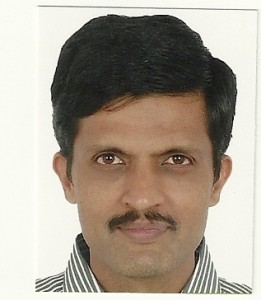 products and software architecture in very large organisations like HP, IBM & Hughes Network Systems. Both had held senior positions in HP, where Vatsa was the Chief architect, and with Srini later, went on to hold Senior Technical Positons at Dell-Perot, just before starting Vigyanlabs. Vatsa had also worked in Processor Systems India, where he did some very innovative and cutting-edge work. These would prove to be building blocks, someday. A very potent combination indeed, which helped file 9 Patents. Slowly but surely the spirit of building an Indian product was taking shape.
products and software architecture in very large organisations like HP, IBM & Hughes Network Systems. Both had held senior positions in HP, where Vatsa was the Chief architect, and with Srini later, went on to hold Senior Technical Positons at Dell-Perot, just before starting Vigyanlabs. Vatsa had also worked in Processor Systems India, where he did some very innovative and cutting-edge work. These would prove to be building blocks, someday. A very potent combination indeed, which helped file 9 Patents. Slowly but surely the spirit of building an Indian product was taking shape.
Early days:
After calling it quits with their present employers, the duo spent two weeks in just defining Vision & Mission of the company that they would build, and establishing short-term & long-term goals. This brainstorming session helped them in creating the DNA : It was going to be an innovative Science & Technology Organisation; it would focus on green technology and social responsibility to be a key driver. All this would be achieved by harnessing the power of teamwork. The customer and his needs would be primary to all business concerns. A deep-dive helped identify the three major problems that the world was facing: Food, Environment & Energy. The seeds were sown – it would be a Science & Technology company where IT would play a vital role.
Vigyanlabs would primarily focus on : Consulting, Architecture & Design and aim to solve problems related to food, environment & energy. The name itself was very Indian and spoke of the future, The “Science” of it, being right here. Vigyan.
Ideation:
 After much study and prior experience, the team soon identified a “hole” in the market and a plausible approach to address the same. Efficient power management was still not very popular in India. The existing solutions were not upto the mark and this was evident, the way laptops consumed power. The battery would get heated and run out sooner than desired, putting user at a disadvantage. The higher income group consumed a lot of power through a freakish number of gadgets and electronic devices. The wastage was huge and put immense pressure on the environment as a whole. This was early 2009, and out of an Incubation Centre in Mysore, was born the idea which took shape and one day be the product IPMPlus.
After much study and prior experience, the team soon identified a “hole” in the market and a plausible approach to address the same. Efficient power management was still not very popular in India. The existing solutions were not upto the mark and this was evident, the way laptops consumed power. The battery would get heated and run out sooner than desired, putting user at a disadvantage. The higher income group consumed a lot of power through a freakish number of gadgets and electronic devices. The wastage was huge and put immense pressure on the environment as a whole. This was early 2009, and out of an Incubation Centre in Mysore, was born the idea which took shape and one day be the product IPMPlus.
The concept that was used to build this product had widespread usage and would be extended to other industries as well. In the US markets, patents were filed for something similar, but not so India. It was built around power consumption and its optimization in laptops – all this without causing any obstruction in the normal flow of work. Intelligent Power Management Plus was about maintaining user experience.
The Passion:
For Srini and Vatsa, it was always about building an Indian product which aimed at fulfilling the vision and mission of the company. They found obvious role models in the likes of Ratan Tata and Sir M. Visvesvaraya, who is also a Bharat Ratna awardee – the doyens of innovative thinking in this country.
Wow Moments:
The Beta version itself helped a customer save 40% on energy cost and the need to come out with a marketable version was even more palpable. Within two years of filing for patents, the founders got it done, a record of some sorts, which normally takes anything upto 5 years or even more.
Marketing Outreach & Strategy:
The stretch has been to create a global footprint and get the product onto the AppStores so it can be used with Android, Apple and Windows applications. The other initiative, is integrating with device OEMs and capture a major chunk of the market. On the Enterprise segment, tablets and servers opened a whole new world of opportunity. Just to give an example of how big the problem really is, the amount of power consumption in large organisations is enough to even run a small town, cited in a recent NYT article. Large businesses have 50 – 100 data centres and do not have many tools which harness power optimisation.
Key Learning:
Building a great product takes time and happens over a number of years. The gestation period is long and during this time patience and sustainability is what really matters. Unlike the Valley, the market in India is not so matured and there is an initial resistance to try out Indian products. Somehow product developers should aim to break that. Finally good products come through good people – who are technically sound, who you can trust and who have the business acumen too.
What is that we have to build?
Every now and then, we hear people arguing about building “Microsoft” and “Google” of India. Companies like Microsoft, Google have built up incredible technologies and their contributions in improving our life is significant. When started, they started with big vision, a tough and relevant problem to solve, and brilliant team behind the vision. While I cannot look into minds of founders of those companies and say what they were thinking, the problems they chose to solve had enormous relevance and potential at their time and place.
When some people talk of building product companies, they want to build another “Facebook”, another “Google”, etc. And some people want to build “Valley” here in Bangalore or Hyderabad. If all we’re doing is trying to build another “Google”, replicate ecosystem of “Silicon Valley” here in an Indian city, sorry people. Your attempts are futile. Suppose we go to Kashmir, and like apples very much there. We come back to Karnataka, want to grow apples. Can we grow apples here? No. Climate, and soil conditions in Karnataka is different from that of Kashmir. If we are still trying to grow apples in Karnataka, we’re just wasting our time and effort. But Karnataka grows sandalwood. This is a tree that grows here very well. And we can grow best Sandalwood in the world.
Don’t mistake the analogy here. I’m in no way suggesting that Indians can’t build a technological giant such as Google or Facebook. What I mean is, we should not build product companies for the sake of it. If you can solve a problem really well without building a product, and build a great business out of it, that should be the way. When we’re building a company or building ecosystems, we’ve to encourage startups to be best in what they are building or doing. It doesn’t really matter after a point if you are building a product or offering a service, what matters is quality of your work. It should solve real problems of the people. In doing so, it only makes sense to utilize existing ingredients of ecosystem to the fullest.
What we should aim at is building a culture of solving problems and solving efficiently. To solve a big tough problem, if we’ve have to build a product for that, we’ll build a product. If we’ve to invent, we’ll invent. If we have to offer an innovative service, we’ll do that. Once we start solving big problems, once we start setting standards of excellence in everything we do, may be we’ll realize product companies are by-products.
Guest Post Contributed by Mahesha Hiremath, Boson Research
NPC is the most successful volunteer driven conference in India…Sharad is yet another volunteer.
In recent years the Indian Software Product industry has seen exponential growth in terms of revenue and people. The industry has matured to a state where numerous entrepreneurs have built successful companies that are becoming household names! Our mission this year is not only to inspire and motivate entrepreneurs but to also impart knowledge and grow their skills to become global players.
We’re bringing together actual practitioners from the global and Indian product industry, serial entrepreneurs, CIOs, investors, customers, VCs and angel investors who will formally and informally network with the delegates and provide them useful insights. The Conclave is the biggest platform for entrepreneurship in India as evidenced by the 1,400 people who attended last year. Listen to Sharad’s 3 point theory..
Let the world know about your software product
You’ve spent months and days and hours conceptualizing your product and then taking it to market. You’ve won the first few customers who are now stable and you’re thinking about what next…if you’ve achieved this, it’s time to show your product to the world.
The NASSCOM Product Conclave LaunchPAD is the place you should be to demonstrate your product and recount your journey from CONCEPT to REALITY. We’re inviting a select community to hear about you and your product. Won’t you come?
A day before NASSCOM Product Conclave kicks-off in Bangalore (November 6, 2012), we are pleased to host an exclusive interactive session with the media, blogger and analyst community where you have the opportunity to launch your new product and enjoy your moment in the spotlight. Last year we had some of the crème-de-la-crème of press attending the event and reporting it in the print and online media.
Who is eligible?
If you are an Indian software product company that has a software product in the market for at least six months and has at least one revenue generating (not beta!) customer, then you are eligible to participate. Apply for the Product LaunchPAD here before October 25, 2012.
What happens next?
NASSCOM shortlists eligible companies and informs them by October 30, 2012 Present your software product to the media at an exclusive event.
Publish a booklet containing information about your company and software product which will be circulated to the media and available online on the NASSCOM Product Conclave website. Opportunity to interact with a focused group of professionals and hear their feedback on your product.
Some of the folks who will help us short-list some great Products are:
 |
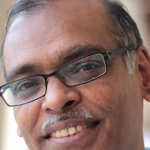 |
 |
|||
| Amit Somani, | Arun Katiyar, | Suresh Sambandam |
Need further help?
If you need advice on how to structure your launch pitch or presentation, then please do let us know. Also we have many curated sessions at product conclave to help you take your software product initiatives even further. If you haven’t registered, then do so NOW!
See you at the NASSCOM Product Conclave – the place to connect with Indian Products Ecosystem.
NH7 Launches Festival Guide Mobile App – Festivapp At #NAMA
NH7.in, the music streaming and discovery platform focused on independent music, has launched a mobile festival guide app called ‘Festivapp‘. The app was showcased at #Alpha, the product and startup showcase at #NAMA conference.
Festivapp is currently available as a free download on the iTunes App Store and the Google Play Store and allows one to discover festivals/events in India and attend them. The company states that these festivals can either be cultural, literary, music or a film festivals.
Registration: We tried the app on a Galaxy Nexus and noticed that the app currently allows one to login either through Facebook or Twitter account credentials, following which they are redirected to the app homepage, which features all the upcoming festivals in the country. One can choose a festival of their preference to browse through more information about it, including information like venue, genre, pricing and festival dates.
Festival Wall: In each of the festival listings, there is something called a ‘festival wall’ which offers a stream of updates being posted from that specific event. These updates include organizer announcements, updates from their friends, and event related updates syndicated from social networking sites like Twitter and Instagram. The wall also features a pull-to-refresh feature and has a countdown clock that counts down to the start of the festival in days, hours and minutes.


The app also allows one to post updates directly to the festival wall. We also noticed that one can either choose to make their updates public or private to their friends. It also offers an option to auto-share their updates on Facebook or Twitter.
Photobooth: The festival wall also allows users to upload pictures from the event. What’s interesting though is that users can add photo effects and virtual items to these photographs. The company saysthat these effects will be themed around the Festival.


Besides this, the app also features a slider menu which allows one to head over to any specific section of the event like announcements, schedule, artists, and travel information among others.
At the time of writing this article, we noticed that the app featured more options for NH7′s own events like NH7 Weekender, including the ability to buy festival tickets from within the app, check out nearby places including restaurants and bars, and find accommodation near to the venue. It also offered guides on things to do at the festival and around the venue. We hope that the company rolls out these features to other festival listings as well, in the future.
Original Post –
Product/Market Fit and Why Startups Should Care
Most successful products go through two distinct phases 1) product/market fit 2) growth/scale. There are a large number of startups that fails before achieving product/market fit and therefore, it is important to understand what is it and why it matters.
What is product/market fit?
Product/market fit is a phase where you try to establish that you are in a good market and have the right product to satisfy the market. Generally it involves developing a deep understanding of customers, running several experiments and iterating product several times to create the right fit between customer needs and your product.
It’s amazing how imporatnt the concept of product/market fit for startups is and how often it is ignored. Focusing on growth before achieving product/market fit can be counter productive for startups. Therefore, it is critical to know when you have achieved it and when to start focusing on scale.
How do you determine product/market fit?
So how do you know that you have achieved product/market fit? Which metric or target you focus on?
Sean Ellis’s definition is perhaps most objective definition for determining product/market fit. Sean devised below survey:
How would you feel if you could no longer use [product]?
1. Very disappointed
2. Somewhat disappointed
3. Not disappointed (it isn’t really that useful)
4. N/A – I no longer use [product]
As per Sean if more than 40% of your customers respond that they will be “Very disappointed” without your product then you have product/market fit. You can find more about Sean’s definition in this post.
Famous VC Mark Andreessen describes a more subtle method. As per Andreessen, you can always feel when product/market fit is happening. Your product usage would be great, customers would be happy, key metrics would grow consistently so on and so forth. More about it here.
Product/market fit is essentially having an engaging product that users find valuable. This can be measured by metrics that are critical for consumer engagement. Take social networking products for example. Key indicator of engagement is what percent of registered users use the product every day and every month. A good standard for engaging social networking product is that at least 30% of registered users are MAUs and at least 10% registered users are DAUs. So it is safe to assume product/market fit when you hit those metrics. Exact metric differs based on nature of product but the essence remains same that how engaging and valuable product is for consumers.
How to achieve product market fit?
1) Focus on engagement features
Typically features fall into one of the below quadrants:

Prioritize features that improve engagement and retention and de-prioritize every thing else till you achieve product/market fit.
2) Experiment and iterate fast
Iterate quickly through features using build-measure-learn model that Eric Ries describes in The Lean Startup.

The core idea behind build-measure-learn feedback loop is to consider product development as an iterative process of learning while minimizing the time through the loop. Many startups fail because they build product on assumption that they know what customer wants. Build-measure-learn model requires you to constantly test your assumptions by quickly building features while constantly measuring to determine how those features are resulting in real progress.
Finding product/market fit is an iterative process but bottom line is to establish key metrics that define product engagement and focus on those metrics relentlessly. Anything that doesn’t contribute to moving those metrics upward is not important before product/market fit.
Original Post By Rajat Garg, BubbleMotion and can be accessed here.
Autodesk Acquires Qontext Social Collaboration Platform.
Acquisition to Expand Social Capabilities of Autodesk 360 Cloud Services.
SAN FRANCISCO, Oct. 4, 2012 — Autodesk Inc., (NASDAQ: ADSK) has completed the acquisition of Qontext,enterprise social collaboration software, from India-based Pramati Technologies. The acquisition of the Qontext technology and development team will accelerate Autodesk’s ongoing move to the cloud and expansion of social capabilities in the Autodesk 360 cloud-based service. Terms of the transaction were not disclosed.
“Autodesk’s acquisition of the Qontext technology is a testament to the Pramati strategy,” said Vijay Pullur, Pramati president. “This transaction is a significant milestone in our ongoing efforts to incubate and build companies that address the rapidly changing needs of business through highly innovative technologies.”
Autodesk intends to use the Qontext technology to add new social capabilities to Autodesk 360, a cloud-based platform that offers users the ability to store, search, and view critical design data improving the way they design, visualize, simulate and share work with others at anytime and from anywhere.


